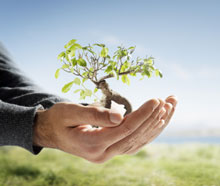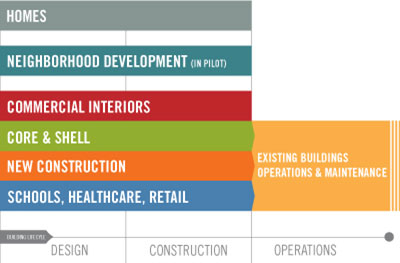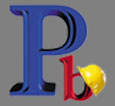|
|

|
|
|
LEED Certification - Peachey Builders has included "green building" into it's wide array of building services!
|
| Leadership in Energy & Environmental Design (LEED) is an internationally recognized green building certification system, providing third-party verification that a building or community was designed and built using strategies intended to improve performance in metrics such as energy savings, water efficiency, CO2 emissions reduction, improved indoor environmental quality, and stewardship of resources and sensitivity to their impacts.
|
 |
|
Developed by the U.S. Green Building Council (USGBC), LEED is intended to provide building owners and operators a concise framework for identifying and implementing practical and measurable green building design, construction, operations and maintenance solutions.
Since its inception in 1998, the U.S. Green Building council(citation LEED for existing buildings v2.0 reference guide page pg 11) has grown to encompass more than 14,000 projects in the United States and 30 countries covering 1.062 billion square feet (99 km²) of development area.[1] The hallmark of LEED is that it is an open and transparent process where the technical criteria proposed by USGBC members are publicly reviewed for approval by the almost 20,000 member organizations that currently constitute the USGBC.

The Green Building Certification Institute (GBCI) was established by USGBC to provide a series of exams to allow individuals to become accredited for their knowledge of the LEED rating system. This is recognized through either the LEED Accredited Professional(LEED AP) or LEED Green Associate (LEED GA) designation. GBCI also provides third-party certification for projects pursuing LEED.
History of the LEED program
The development of LEED began in 1993 and was spearheaded by Natural Resources Defense Council (NRDC) senior scientist Robert K. Watson who, as Founding Chairman of the LEED Steering Committee (until 2006) led a broad-based consensus process that included non-profit organizations, government agencies, architects, engineers, developers, builders, product manufacturers and other industry leaders. Early LEED committee members also included USGBC co-founder Mike Italiano, architects Bill Reed and Sandy Mendler, builder Gerard Heiber, builder Myron Kibbe and engineer Richard Bourne; engineers Tom Paladino and Lynn Barker co-chaired the LEED technical committee in 1996.
In 1998 the LEED 1.0 pilot program was released; during the pilot period extensive revisions were made and by March 2000 LEED 2.0 was released to the marketplace.
LEED has grown from one standard for new construction to a comprehensive system of six standards covering all aspects of the development and construction process. LEED also has grown from six volunteers on one committee to more than 200 volunteers on nearly 20 committees and over 200 professional staff in Washington, DC. LEED was created to accomplish the following:
Define "green building" by establishing a common standard of measurement
Promote integrated, whole-building design practices
Recognize environmental leadership in the building industry
Stimulate green competition
Raise consumer awareness of green building benefits
Transform the building market
Green Building Council members, representing every sector of the building industry, developed and continue to refine LEED. The rating systems address eight major areas:
|
|
Location and Planning
Sustainable Sites
Water Efficiency
Energy and Atmosphere
Materials and Resources
Indoor Environmental Quality
Innovation and Design Process
Regional Priority
Benefits of Green Building
Environmental benefits:
Enhance and protect ecosystems and biodiversity
Improve air and water quality
Reduce solid waste
Conserve natural resources
Economic benefits:
Reduce operating costs
Enhance asset value and profits
Improve employee productivity and satisfaction
Optimize life-cycle economic performance
Health and community benefits:
Improve air, thermal, and acoustic environments
Enhance occupant comfort and health
Minimize strain on local infrastructure
Contribute to overall quality of life
|
LEED is a third-party certification program and the nationally accepted benchmark for the design, construction and operation of high-performance green buildings. LEED gives building owners and operators the tools they need to have an immediate and measurable impact on their buildings performance. LEED promotes a whole-building approach to sustainability by recognizing performance in five key areas of human and environmental health: sustainable site development, water savings, energy efficiency, materials selection and indoor environmental quality.
How is LEED Developed?
LEED rating systems are developed through an open, consensus-based process led by LEED committees. Each volunteer committee is composed of a diverse group of practitioners and experts representing a cross-section of the building and construction industry. The key elements of USGBC's consensus process include a balanced and transparent committee structure, technical advisory groups that ensure scientific consistency and rigor, opportunities for stakeholder comment and review, member ballot of new rating systems, and a fair and open appeals process.
 |
|
For more information, or to get a quote on a commercial, institutional, or industrial "Green Building" project call us at 207-622-7531. We look forward to your feedback and inquiries.
|
|

